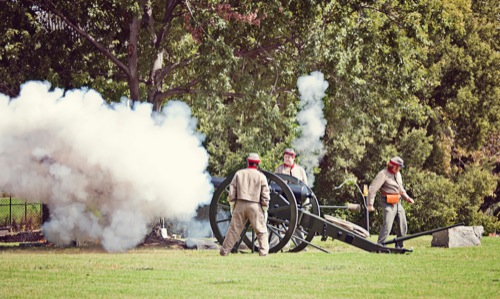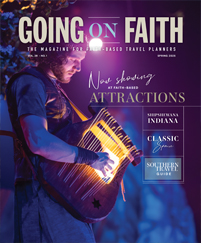
Courtesy American Civil War CenterMuseums exist to preserve history, interpret subjects and tell stories. In the South, iconic museums seek to convey a broader story — of world war, civil war and civil rights; of music, art and sport — through their special connections to the area’s history, culture and community.
American Civil War Center
Richmond, Virginia
Tredegar Iron Works opened in 1837 in Richmond, Virginia, and was the nation’s third-largest iron manufacturer by 1860. When Richmond became the Confederate capital in May 1861, Tredegar became the Confederacy’s primary iron and artillery works.
Today, the 22-acre site and remaining buildings are a national historic landmark and home to the American Civil War Center, which aims to tell the story of the Civil War from three perspectives: Union, Confederate and African-American.
“The resounding comment is, ‘This finally makes sense to me; I never understood it this way,’” president Christy Coleman said of visitors’ reactions. “They understand why it matters, and ultimately, that’s our mission because the Civil War still impacts us today.”
Visitors start at “In the Cause of Liberty,” an exhibit that traces the causes and course of the war through films, historic artifacts and hands-on activities. From there, guests take a grounds tour that shows how Tredegar operated as a business and its role in the Civil War.
The museum also just received a grant to fund a daily costumed interpreter program for the next two years, Coleman said. Beginning this summer, visitors may run into Tredegar owner Joseph Anderson, or a young Irish woman who worked in the Confederate Laboratory or a free African-American who was conscripted to dig ditches. The center fires cannons on Saturdays, and groups can arrange special cannon demonstrations at other times.
Discounts and guided tours are available to groups of 10 or more. Groups can also opt for themed tours such as “With God on Our Side,” which looks at how the three principle groups used Scripture and their understanding of Christianity to justify their position on the war.
Birmingham Civil Rights Institute
Birmingham, Alabama
Many visitors to the Birmingham Civil Rights Institute are on a pilgrimage, said museum archivist Laura Anderson.
“Our location is on what a lot of people consider to be sacred ground,” she said.
The institute is around the corner from both Kelly Ingram Park, which served as a large-scale staging ground for civil rights protests and demonstrations, and the Sixteenth Street Baptist Church, which was bombed in September 1963 in a racially motivated attack that killed four girls.
“A lot of people are on a pilgrimage to these sites, and they end up learning so much more through the museum and the experience here,” Anderson said.
The institute, which renovated its permanent exhibit in 2009, addresses the broader story of the civil rights movement, but “the detail is centered around what happened here in Birmingham,” she said.
The permanent exhibit includes the doors of the Birmingham jail cell where Martin Luther King Jr. was imprisoned when he wrote his famous “Letter From Birmingham Jail.”
“There’s cot and a little toilet and the doors of the cell,” she said. “Ever since the first week we were open, for whatever reason, people started throwing money into the cell.”
A special exhibit, “Marching On: The Children’s Movement at 50,” which opened in March and will run through November, aims to communicate a more detailed perspective of children growing up in midcentury Birmingham.
“They lived in a culture of fear and intimidation, and it was finally the children who took to the streets because their parents didn’t want to risk their lives and their jobs,” Anderson said.










